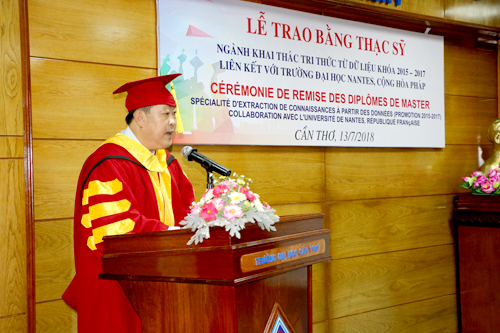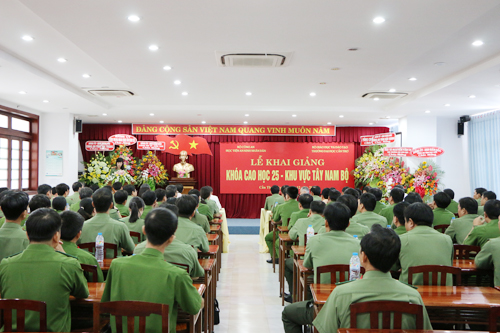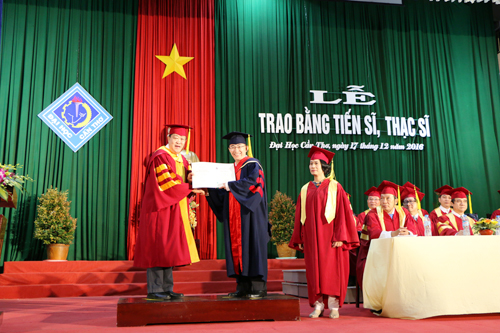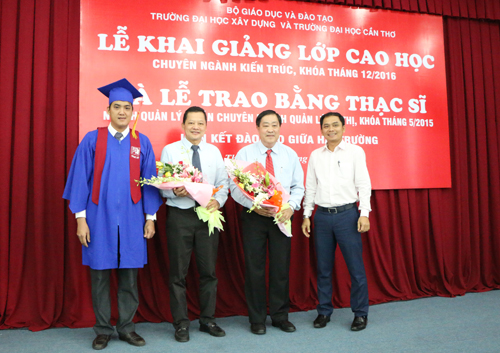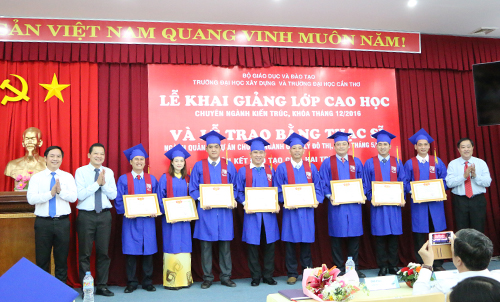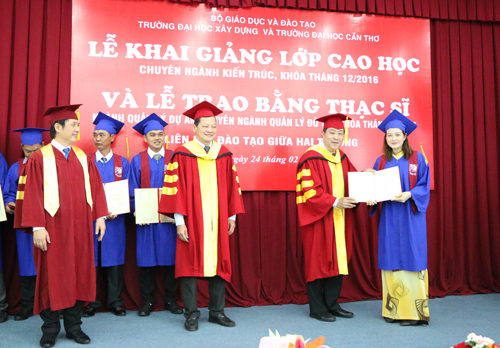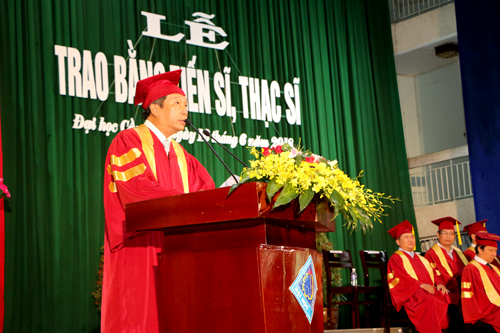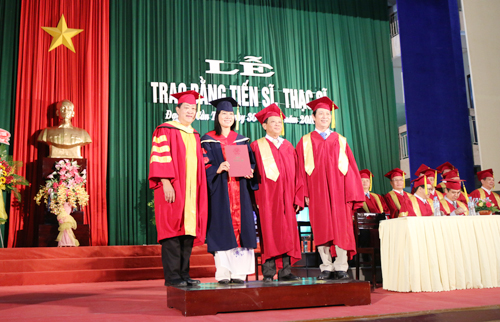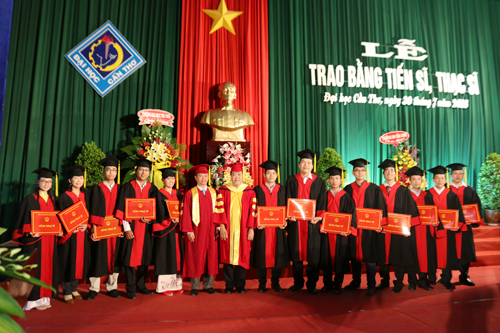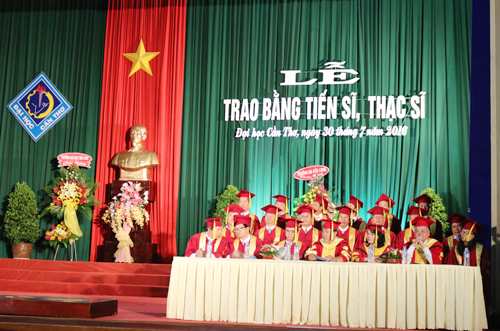
Tên đề tài: “Đánh giá giá trị dịch vụ hệ sinh thái rừng vùng núi tỉnh An Giang”.
Tác giả: Đặng Thị Thanh Quỳnh, Khóa: 2014
Chuyên ngành: Phát triển nông thôn; Mã số: 62620116. Nhóm ngành: Nông, lâm nghiệp và thuỷ sản.
Người hướng dẫn chính: TS. Đặng Kiều Nhân - Trường Đại học Cần Thơ
Người hướng dẫn phụ: PGS.TS. Nguyễn Duy Cần - Trường Đại học Cần Thơ
- 1. Tóm tắt nội dung luận án
Dịch vụ hệ sinh thái rừng đóng vai trò quan trọng trong việc tạo thu nhập và hỗ trợ sinh kế cho cư dân địa phương. Tuy nhiên, việc khai thác và quản lý tài nguyên chưa đạt hiệu quả, các yếu tố tự nhiên, kinh tế - xã hội làm tăng áp lực lên sinh kế và giảm lợi ích của các dịch vụ hệ sinh thái. Chính vì vậy, làm thế nào để khai thác hiệu quả dịch vụ HST rừng, nâng cao giá trị dịch vu HST mà không gây hại đến môi trường. Do vậy, luận án này được thực hiện trong hai năm (2018 – 2020) nhằm (1) xác định các loại dịch vụ HST rừng và giá trị (thị trường, hữu hình) dịch vụ HST mà cư dân thụ hưởng ở hai huyện miền núi Tri Tôn và Tịnh Biên; (2) xác định mối quan hệ giữa giá trị dịch vụ HST rừng và sinh kế cư dân; và (3) nhận ra động lực, trở lực và giải pháp phát huy giá trị dịch vụ HST và nguồn lực sinh kế của cư dân địa phương đồng thời quản lý bền vững tài nguyên rừng trong tương lai.
Nghiên cứu sử dụng phương pháp tiếp cận dựa vào dịch vụ HST kết hợp sinh kế bền vững nhằm khám khá mối quan hệ giữa dịch vụ HST rừng và sinh kế cư dân địa phương. Nghiên cứu sử dụng phương pháp thu thập số liệu như phỏng vấn người am hiểu, thảo luận nhóm, và phỏng vấn hộ để thu thập số liệu liên quan đến các loại dịch vụ HST, giá trị dịch vụ mà hộ hưởng lợi, nguồn lực sinh kế, và các yếu tố chi phối đến giá trị dịch vụ HST. Nghiên cứu sử dụng phương pháp phân tích thống kê để mô tả và so sánh sự khác biệt nguồn lực sinh kế các nhóm hộ, phân tích bảng chéo phân tích sự khác nhau giữa tỷ lệ hộ hưởng lợi dịch vụ HST ở các xã nghiên cứu, và phân tích tương quan chính tắc để phân tích mối quan hệ giữa giá trị dịch vụ HST rừng và sinh kế các nhóm hộ.
Kết quả nghiên cứu của luận án cho thấy có 43,4% hộ dân hộ hưởng lợi dịch vụ HST rừng, các dịch vụ đó chủ yếu từ sản phẩm canh tác nông nghiệp như lúa, hoa màu và cây ăn trái; khai thác sản phẩm rừng như củi, dược liệu, rau rừng và nước; và dịch vụ du lịch sinh thái. Hệ thống canh tác nông - lâm kết hợp (cây rừng – cây ăn trái) ở tiểu HST đồi núi và canh tác khoai mì ở tiểu HST ruộng trên có giá trị kinh tế tương đối cao. Khoảng 7,2% hộ khai thác củi với giá trị bình quân là 14,4 triệu đồng/năm/hộ và 17% hộ khai thác rau rừng với giá trị khoảng 400.000 đồng/năm/hộ. Đối với du lịch, 12,6% hộ hưởng lợi trực tiếp, xảy ra chủ yếu ở xã An Hảo, với giá trị 5,6 triệu đồng/năm/hộ.
Bên cạnh đó, kết quả cũng cho thấy có mối liên hệ chặt chẽ giữa sinh kế hộ và giá trị dịch vụ hệ sinh thái rừng. Trong đó, sinh kế hộ và giá trị dịch vụ cung cấp và dịch vụ văn hoá có mối quan hệ tương quan thuận chiều. Phát hiện trong nghiên cứu, hộ khá hưởng lợi từ dịch vụ HST nhiều hơn hộ trung bình và nghèo. Để nâng cao giá trị dịch vụ hệ sinh thái và sinh kế, luận án đề xuất một số giải pháp lựa chọn và cải tiến hệ thống canh tác ở các tiểu HST phù hợp và hiệu quả, nâng cao năng lực hộ tạo cơ hội phát huy giá trị tiềm năng dịch vụ HST, tăng cường sự hỗ trợ của nhà nước và áp dụng chính sách chi trả dịch vụ môi trường cho vùng. Qua đó góp phần phát huy giá trị dịch vụ HST và phân bổ hợp lý các lợi ích từ dịch vụ HST, góp phần bảo tồn và phát triển bền vững HST rừng.
- 2. Những kết quả mới của luận án
Kết quả nghiên cứu đã chứng minh được dịch vụ cung cấp và dịch vụ văn hoá, có mối quan hệ mật thiết với sinh kế hộ. Qua đó cho thấy, sinh kế hộ là một một phần không thể tách rời khỏi HST rừng, do vậy, các nghiên cứu về dịch vụ HST rừng phải bao gồm cả sinh kế hộ và các yếu tố tự nhiên, kinh tế - xã hội có liên quan. Bên canh đó, kết quả nghiên cứu đã phát hiện ra rằng, ở vùng núi tỉnh An Giang, hộ khá có nhiều đất canh tác nông nghiệp hưởng lợi dịch vụ HST rừng nhiều hơn hộ nghèo ít đất. Đây là điểm mới được phát triện trong nghiên cứu đối với HST rừng. Kết quả trước kia cho rằng, người nghèo phụ thuộc nhiều vào HST rừng và là nguy cơ đe doạ HST rừng.
- 3. Các ứng dụng/khả năng ứng dụng trong thực tiễn, các vấn đề tiếp tục nghiên cứu
Kết quả nghiên cứu của luận án là nguồn dữ liệu khoa học cho các nhà quản lý về kinh tế - xã hội, nông nghiệp và môi trường. Nghiên cứu giúp người ra quyết định và các nhóm người có liên quan nhận thức đầy đủ hơn về vai trò của dịch vụ HST rừng đối với sinh kế dân cư địa phương và mối quan hệ giữa sinh kế và dịch vụ HST, từ đó làm cơ sở nâng cao giá trị dịch vụ HST, cải thiện sinh kế mà không gây hại môi trường. Bên cạnh đó, luận án còn là một tài liệu khoa học có giá trị thiết thực phục vụ cho học tập, nghiên cứu khoa học và giảng dạy tại các Viện Trường.
Cần tiếp tục nghiên cứu và so sánh tính bền vững về mặt môi trường và xã hội các hệ thống canh tác ở cả ba tiểu HST, đánh giá tác hại của thuốc BVTV đối với HST rừng, đặc biệt cạn kiệt tài nguyên dược liệu. Bên cạnh đó, cần nghiên cứu giải pháp hỗ trợ thực hiện chính sách chi trả dịch vụ môi trường rừng, giúp tạo sự công bằng giữa các tiểu HST khác nhau và giữa các nhóm người có liên quan khác nhau.
- Thesis summary
Forest ecosystem services play an important role in generating income and supporting livelihoods for rural people. However, resource exploitation and management are ineffective, and natural, socio-economic factors that increase pressure on livelihoods and reduce the benefits of ecosystem services. Therefore, how to exploit effectively forest ecosystem services, improve the value of ecosystem services without harming the environment. Therefore, this thesthis implemented for two years (2018 - 2020), with the main objectives of the dissertation are: (1) understand available forest ecosystem services and their (market, tangible) value that benefits local people in Tri Ton and Tinh Bien districts; (2) determine relationships between the (market) value of forest ecosystem services and local livelihoods; and (3) identify enablers, barriers and solutions of efficiently enhancing ecosystem service value and of improved livelihoods of local people as well as sustainable management of forest resources in the future.
This study has used an ecosystem-service-based approach combining sustainable livelihoods to examine the relationship between forest ecosystem services and local people’s livelihoods. The study used data collection methods such as interviews with knowledgeable people, group discussions, and household interviews to collect data related to the types of ecosystem services, the value of ecosystem services to which the household benefits, and livelihoods resources, and factors affecting the ecosystem service value. The study uses statistical analysis to describe and compare differences in livelihood resources of household groups, cross-table analysis to analyze differences between the rate of households benefiting from ecosystem services in study site of communes, and canonical correlation analysis to analyze the relationship between the value of forest ecosystem services and the livelihoods of household groups.
The research results show that 43.4% of households benefit from forest ecosystem services, which ecosystem services are mainly from agricultural products such as rice, vegetables and fruit; exploitation of forest natural products like firewood, medicinal herbs, vegetables and water; and ecotourism services. Agro-forestry integrated farming systems (i.e. forest trees - fruit crops) in the hilly sub-ecosystem and cassava production in the upland sub-ecosystem gave relatively higher profit than other framing systems. About 7.2% of interviewed households harvested firewood with an average annual value of 14.4 million VND/household and 17% of households exploited natural vegetables with annual earnings of about 400,000 VND/household. For tourism, 12.6% of households benefited directly, mainly in tourism-favourable An Hao commune, earning an average of 5.6 million VND/household annually.
In addition, the results also show a close relationship between household livelihoods and the value of forest ecosystem services. In which, household livelihoods and the value of provisioning and cultural services have a positive correlation. In this study, it is also demonstrated that better-off households benefit from ecosystem services more than middle and poor households. In order to improve the value of ecosystem services and livelihoods, the dissertation proposes some solutions to choose appropriate and effective farming systems in the ecosystems, improving household capacity to create opportunities to promote the potential value for ecosystem services, and increasing state support. Thereby contributing to promoting the value of ecosystem services and rationally distributing benefits from ecosystem services, contributing to the conservation and sustainable development of forest ecosystems.
- New findings of the thesis
The research results have proven that provisioning services and cultural services have a close relationship with household livelihoods. This shows that household livelihoods are an inseparable part of the forest ecosystem, so research on forest ecosystem services must include household livelihoods and natural, economic, and social factors. In addition, research results have found that, in the mountainous area of An Giang province, the better-off households with a lot of agricultural land benefit from forest ecosystem services more than poor households with less land. This is a new point developed in research on forest ecosystems. The previous results show that the poor depend heavily on forest ecosystems and are a threat to forest ecosystems.
- Application prospect and suggestions for further study
The research results of the thesis are scientific data sources for managers in socio-economic, environmental, and agricultural fields. The research helps decision-makers and related groups of people to be more fully aware of the role of forest ecosystem services for local people's livelihoods and the relationship between livelihoods and ecosystem services, thereby doing facilities to improve the value of ecosystem services, improve livelihoods without harming the environment. Besides, the thesis is also a scientific document of practical value for learning, scientific research, and teaching at the university and institute.
It is necessary to continue to study and compare the environmental and social sustainability of the farming systems in all three sub-ecosystems, assess the harm of pesticides on forest ecosystems, especially the depletion of medicinal resources. In addition, it is necessary to study solutions to support the implementation of the policy on payment for forest environmental services, helping to create equity between different ecosystems and between different groups of stakeholders.
- Xem chi tiết nội dung luận án
- Xem thông tin đăng tải tại Website Bộ giáo dục và Đào tạo. (Nhập tên NCS vào ô tìm kiếm)





